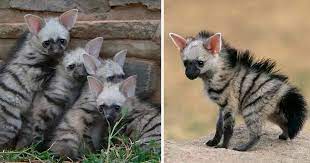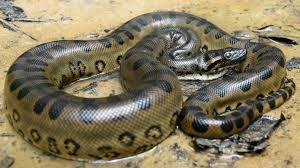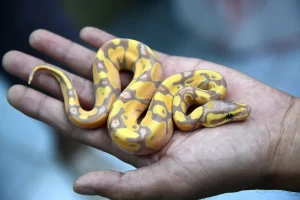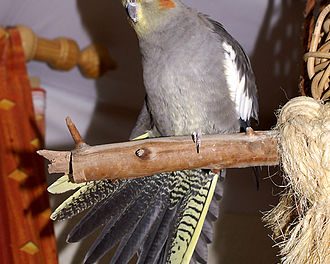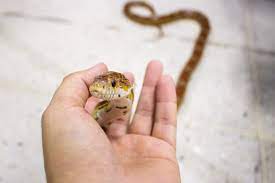The aardwolf is an insectivorous mammal, native to Africa. It belongs to the same family as the hyena, however, unlike many of its carnivorous relatives, the aardwolf does not hunt large animals. It eats insects and their larvae. Read the full article, of Pritish Kumar Halder, in which he discusses the Aardwolf Mammal.

Distribution
Aardwolves are found in Southern Africa, and in East and Northeast Africa. They live in open, dry plains and bushland, avoiding mountainous areas.
Habits and Lifestyle
Aardwolves are shy and nocturnal animals that sleep in burrows by day. During the winter, however, they may, on occasion, become diurnal feeders. This happens during the coldest periods as they then stay in at night to conserve heat. For most of the year, aardwolves spend time in shared territories consisting of up to a dozen dens.
They live in family groups consisting of a mated pair and their young. If their territory is infringed upon, aardwolves will chase the intruder up to 400 m (1,300 ft) or to the border. If the intruder is caught, which rarely happens, a fight will occur, which is accompanied by soft clucking, hoarse barking, and a type of roar. The majority of incursions occur during the mating season.

Aardwolf – in burrows
When food is scarce, the stringent territorial system may be abandoned and as many as three pairs may occupy a “single territory”. Their dens are usually abandoned aardvark, springhare, or porcupine dens, or on occasion, they find shelter in crevices in rocks. They will also dig their own dens, or enlarge dens started by springhares. They typically will only use one or two dens at a time, rotating through all of their dens every six months.
During the summer, they may rest outside their den during the night and sleep underground during the heat of the day. Aardwolves locate their food by sound and also from the scent secreted by the soldier termites. They feed primarily on termites licking them off the ground. Aardwolves do not destroy the termite mound or consume the entire colony, thus ensuring that the termites can rebuild and provide a continuous supply of food. They often memorize the location of such nests and return to them every few months.
Diet and Nutrition
Aardwolves are carnivores (insectivores). They feed mainly on termites but also other insects, larvae, eggs, and, occasionally small mammals and birds, but these constitute a very small percentage of their total diet.
Mating Habits
Aardwolves are monogamous and form pairs, however, dominant males may mate with more than female. Their breeding season varies depending on location but normally takes place during autumn or spring. In South Africa, breeding occurs in early July. During this time, unpaired males search their own territory, as well as others, for a female to mate with.

aardwolf – baby
Dominant males also mate opportunistically with the females of less dominant neighboring aardwolves, which can result in conflict between rival males. Gestation lasts between 89 and 92 days, producing 2 to 5 cubs (most often 2 or 3) during the rainy season (November-December) when termites are more active. The cubs are born with their eyes open, but initially are helpless, and weigh around 200-350 g (7.1-12.3 oz).
The first 6 to 8 weeks are spent in the den with their parents. The male may spend up to 6 hours a night watching over the cubs while the mother is out looking for food. After 3 months, the cubs begin supervised foraging, and by 4 months are normally independent, though they often share a den with their mother until the next breeding season. By the time the next set of cubs is born, the older cubs have moved on. Aardwolves generally achieve reproductive maturity at 1,5 to 2 years of age.

Aardwolf resting
Population
Population threats
Aardwolves are relatively widespread throughout eastern Africa. In some areas, they are persecuted because of the mistaken belief that they prey on livestock; however, they are actually beneficial to the farmers because they eat termites that are detrimental. In other areas, the farmers have recognized this, but aardwolves are still killed, on occasion, for their fur. Aardwolves are also killed by dogs and other carnivores and suffer from incidents on roads.

Population number
The IUCN Red List and other sources don’t provide the number of the aardwolf total population size. Currently, this species is classified as Least Concern (LC) on the IUCN Red List and its numbers today are stable.
Ecological niche
Due to their diet habits, aardwolves play an important role in their ecosystem. They control termite populations, preventing extensive wood damage benefiting natural habitats as well as for humans.
Fun Facts for Kids
- The name “aardwolf” means “earth-wolf” in Afrikaans and Dutch.
- The aardwolf is also called “maanhaar-jackal” (Afrikaans for “mane-jackal”), “|gīb” by the Nama people, “ant hyena”, “termite-eating hyena” and “civet hyena”, based on its habit of secreting substances from its anal gland.
- An aardwolf may consume up to 250,000 termites per night using its long, sticky tongue which is tough enough to withstand the strong bite of termites.
- Aardwolves are not fast runners nor are they particularly adept at fighting off predators. Therefore, when threatened, the aardwolf may attempt to mislead its foe by doubling back on its tracks. If confronted, it may raise its mane in an attempt to appear more menacing. It also emits a foul-smelling liquid from its anal glands.
- Unlike other hyenas, aardwolves do not scavenge or kill larger animals. Contrary to popular myths, aardwolves do not eat carrion, and if they are seen eating while hunched over a dead carcass, they are actually eating larvae and beetles. Also, contrary to some sources, they do not like meat, unless it is finely ground or cooked for them.
- Aardwolves are primarily solitary foragers, and while feeding, they can cover about 1 km (0.62 mi) per hour, which translates to 8-12 km (5-7.5 mi) per summer night and 3-8 km (1.9-5 mi) per winter night.

